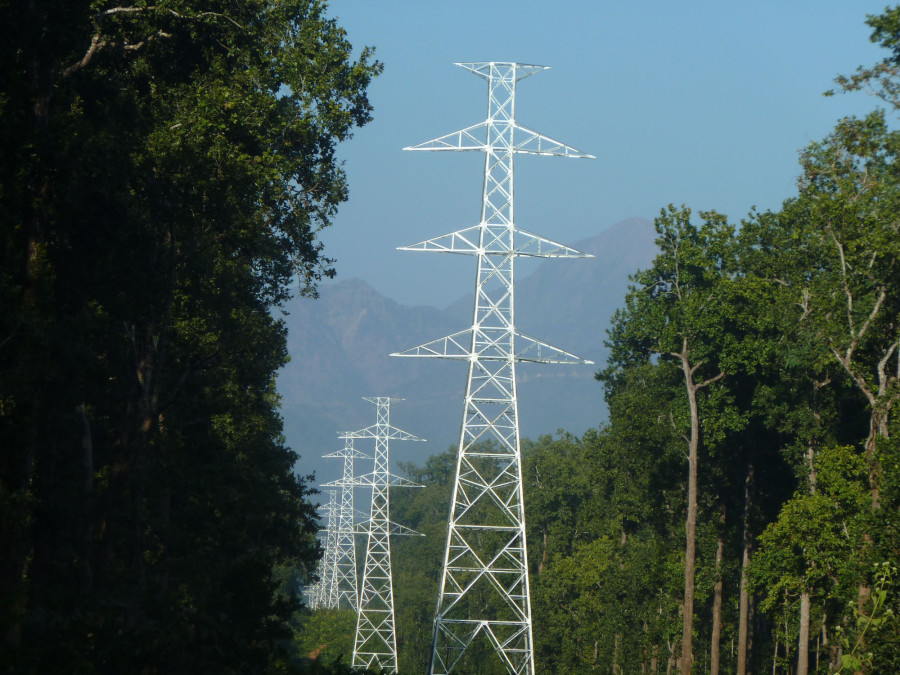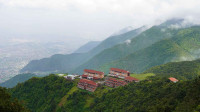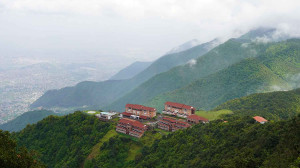Money
Land acquisition and forest clearance issues delay transmission line project
The Kusma-New Butwal power line project is part of a $180 million system expansion project.
Prahlad Rijal
The Kusma-New Butwal transmission line project—a major component of the $180 million South Asia Subregional Economic Cooperation Power System Expansion Project—has hit a snag over land acquisition and forest clearance issues.
According to project chief Chandan Kumar Gosh, work has failed to gain momentum due to delayed paperwork by forest officials, obstructions by community forests and locals in Baglung, Nawalparasi, Palpa and Parbat.
“The project office has completed all the preparations pertaining to forest clearance and easement rights, but it has not been able to begin work,” said Gosh. “There is lack of coordination among forest officials; and in some places, locals have obstructed laying of tower foundations.”
The alignment of the 88-km 220 kV transmission line passes through Parbat, Baglung, Syangja, Palpa, Rupandehi and Nawalparasi districts along the Kali Gandaki transmission corridor in central Nepal.
The project office has obtained a forest clearance permit in Parbat, but officials at the local community forest have been posing obstructions. Forest clearance in Nawalparasi and Palpa, where around 14,000 trees need to be fell, is bogged down in paperwork. Locals in Baglung have expressed discontent over the terms of the easement rights.
As a result of the setbacks, the Kusma-New Butwal transmission line being built to strengthen the evacuation capacity of the power plants in the Kali Gandaki River basin is less likely to be commissioned in December 2020 as expected.
On Friday, a team of project officials led by Nepal Electricity Authority Managing Director Kulman Ghising left for Baglung and other districts to inspect the project's progress and try to resolve the issues.
“The power utility is coordinating with the respective authorities and locals to resolve issues pertaining to easement rights,” Ghising told the Post. “It is a major component of the project that is being built to make our distribution system more efficient, and all the stakeholders must actively work to allow the project to move ahead.”
The 88-km section is a major component of the Kali Gandaki Transmission Corridor Project funded by grants and loan arrangements with the Asian Development Bank. The Nepal Electricity Authority, the project executing agency, awarded a $24 million contract to build the power line from Kusma to Butwal to Indian contractor Larsen and Turbo in 2017.
The paperwork and surveys to delineate the alignment of the power line have been completed, but lack of coordination among local authorities and the project office has sunk the project into uncertainty.
The District Administration Office in Syangja published a 15-day notice on Friday calling 67 individuals to collect their easement compensation so that construction work on the transmission line can begin.
Four projects, including three high capacity transmission lines and three 220/132 kV substations in the Kali Gandaki corridor, are currently under construction under the $180 million grant and concessional loan agreement.
The project has reported 75 percent physical progress in the Dana-Kusma section.
“Work is in full swing and we have finished erecting 114 towers, and plan to commission the line within three months,” said Gosh.
The Asian Development Bank, while announcing its decision to aid the projects in 2014, had said that the projects were initiated considering the fact that an inadequate power evacuation network was a bottleneck to meeting domestic power demand and engaging in power trade with neighbouring countries.
Also, the government has prioritised these transmission lines as power consumption is concentrated in Nepal's central region, and the country's largest hydropower project in operation, the 144 MW Kali Gandaki A, lies in the corridor. The project has also planned to build a second cross-border transmission line from New Butwal to Gorakhpur in India to export electricity from hydropower projects in the Kali Gandaki and other basins.
An agreement between India and Nepal on cross-border transmission, allowing a $630 million project funded by Millennium Challenge Corporation and the government to start, remains to be signed.
As per power utility statistics, 20 hydel plants owned by independent power producers are currently under construction in the Kali Gandaki corridor while seven are in operation. Also, Gandaki Province, where the Kali Gandaki corridor projects are located, is the largest power producer in the country, feeding 481 MW to the national grid.




 7.98°C Kathmandu
7.98°C Kathmandu















